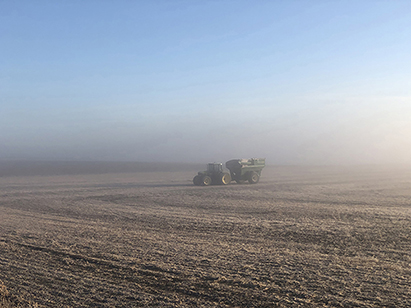Amassing the giant Gear Guide issue is an absorbing task. We hope that you, like us, enjoy learning about the new for ’22 products and will favor the fantastic industry partners that make this issue possible.
As much as we enjoy new gear, we realize that what keeps all of us so passionate about waterfowl hunting are THE BIRDS! So, perhaps it’s worth spending a few moments discussing ducks and geese, the backbone of our common obsession.
I recently noticed that the National Wild Turkey Federation (NWTF) will turn 50 in the coming year. In the early 1900s, wild turkeys were at a low point, down to about 200,000 birds due to overharvest and loss of forests. Founded in 1973, NWTF dedicated itself to assisting restoration efforts for wild turkeys that had by that time, through protection, rebounded to about 1.9 million birds. Continuing efforts by state and federal agencies, often funded by NWTF, have brought wild turkey numbers to more than 6.25 million birds. Congrats to NWTF and 50 years!
As waterfowl hunters, we too have organizations dedicated to waterfowl conservation, and many of us are members. But waterfowl conservation and turkey conservation are two very different worlds, primarily due to a singular but striking difference—habitat.
Put simply, turkey habitat is seldom controversial and was naturally returning to favoring turkeys after the early 1900s. Waterfowl habitat is almost always controversial and has been going in the wrong direction, vanishing ever faster since the mid-1900s.
The decimation of the hardwood forests in the U.S. during the 1800s had much to do with the decline of the wild turkey. However, as those forests were allowed to regenerate in the 1900s, turkeys found new, essential habitat. With habitat aplenty, turkeys only needed to be protected and reintroduced.
The decimation of the prairie pothole regions of the U.S. and Canada, the drainage of wetlands, the conversion of prairie grasslands to agriculture only began rapid expansion after about 1950 and has accelerated since. It continues today.
Conservation organizations targeting hunters have offered a bright picture of water on the North Dakota prairie this year and a hopeful breeding season for ducks—all true, all good. But these press releases citing the recent 2022 Breeding Duck Survey, conducted by the state of North Dakota, seem to have left some important information out, as follows…
“Nesting cover in North Dakota continues to decline. We are seeing substantial changes in grassland conditions, with many areas that were formerly grassland being converted into agricultural land. Expiring CRP contracts and other factors are pushing these conversions. We continue to note many large tracts of grassland/CRP and native prairie that had been recently converted to cropland or were in the process of being plowed. Wetland drainage and wetland conversion to cropland, including drain tiling, continues to be an expanding occurrence…”
It continues, “…the loss of critical breeding habitats will be disastrous for breeding ducks and hunting opportunities in North Dakota.” And, “Waterfowl breeding habitats are under extreme pressure in North Dakota and these developments can only further reduce waterfowl production in the state.”
Turkeys are easy. Ducks are hard. Ignore the facts at your own peril.

